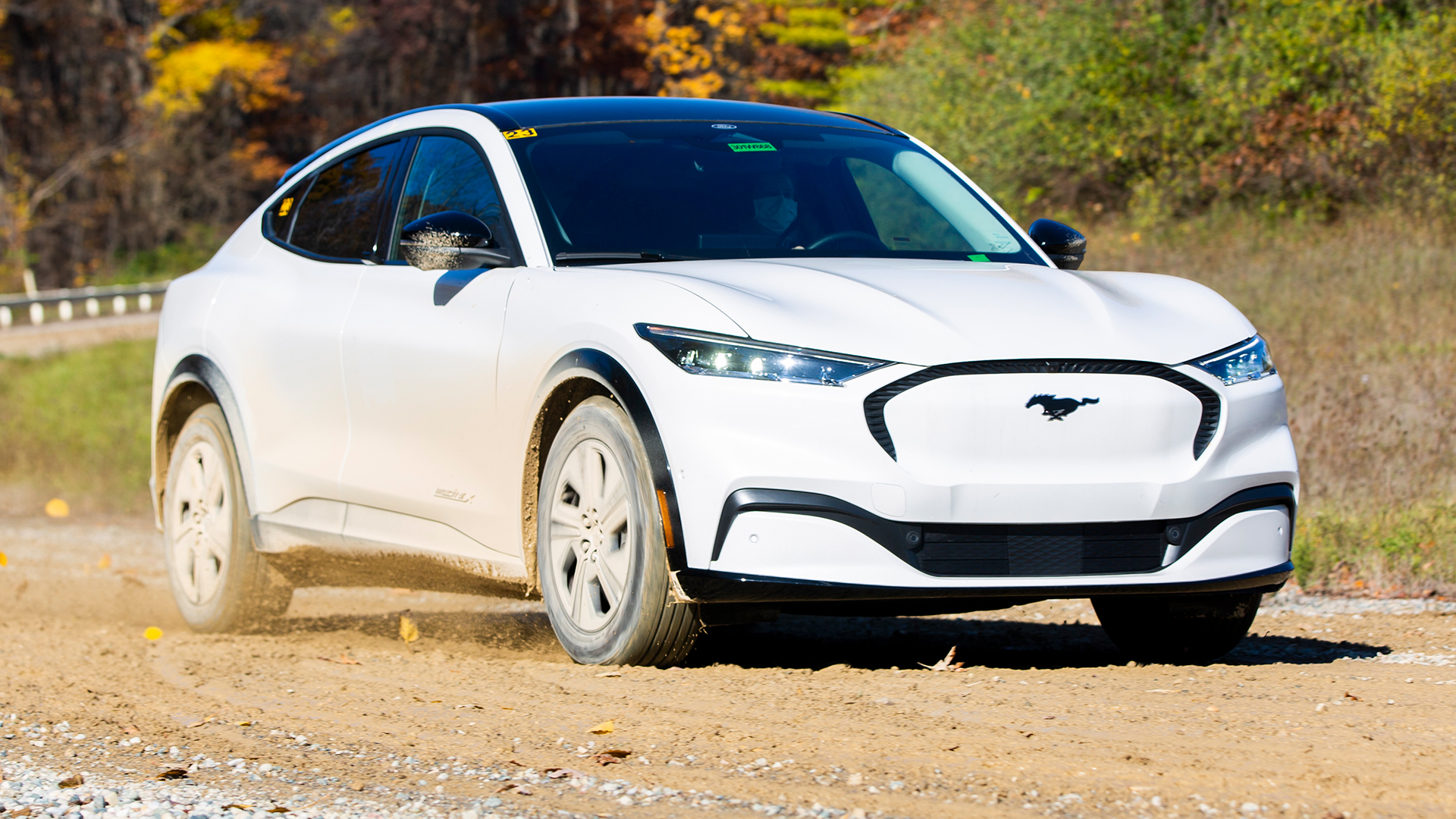

Part of buying any new car is picking something that’ll withstand daily use. That means staying in tip-top shape despite driving on poorly kept roads, accidentally smacking the infotainment screen with your phone, and the daily in-and-out toll taken on your seats.
Ford has been in the game long enough to know that and it’s never shied away from torture testing its cars and trucks. As Ford launched its first dedicated electric vehicle, the Mustang Mach-E, the automaker knew that it too had to be durable, and decided to put it through the wringer by giving it a lifetime’s worth of punishment.

For starters, Ford wanted to make sure that the Mach-E’s exterior could hold up to the abuse of rocks, dirt, and grime—something that automakers still have issues with. The Blue Oval sent one of its Mach-E testers down some paths less traveled which pelted the pony’s paint with rocks.
At 60 miles per hour, the nearly 5,000-pound electric crossover spun up different grades of stone along a “miles-long” path. Ford says that it repeated this process nearly 200 times in order to make sure that the Mach-E’s finish didn’t end up speckled or worse. Ford said that the total distance covered by the stone chip course was around 300 miles, and the paint was surprisingly no worse for wear.

Then came time to test out the weatherproofing. According to a study cited by the automaker, nearly 27 percent of Americans were unsure if electric cars could drive in the rain, so it decided to educate by putting a Mach-E through the wettest, windiest scrutiny of them all: the car wash test.
Ford sent the Mach-E through an automated car wash 60 times, enough to simulate a rough washing nearly once every other week for two years. It wasn’t brushless, either, meaning that the paint was subjected to significant debris in addition to the high-powered sprayers.
Ford then sent its engineers out with pressure washers to spray door seals, badges, headlights, and adhesives. These parts (and more) were blasted with 140-degree water from roughly a foot away at 1,700 psi. As intended, it never short-circuited.

Next up was the interior.
Ford wanted to make sure that its seats were ultra-durable, so it put its army of robotic butts to work, testing the equivalent of 25,000 entry-and-exit motions on the Mach-E’s seats. Flexibility was also assessed by simulating movements in the seat material more than 100,000 times. There were also tests performed to gauge just how resistant the seats were to abrasive materials and chemicals like hand sanitizer.
Finally, at the center of the Mach-E’s dashboard is its huge 15.5-inch display. Nearly all of the vehicle’s functions can be controlled from this tablet-like screen, and Ford knew it would be a huge issue if it ever were to break. That’s why the automaker tried several ways to smash the screen and its mounting system, including hitting it with a hammer and throwing a large metal sphere at it.


Ford’s testing of the Mach-E is super fun to watch. But it also helps to tell a story of what lengths the automaker went through to make sure that consumers were receiving a well-vetted product—especially when it comes in the form of their first-ever flagship EV. In case you were wondering, the upcoming F-150 Lightning also went through some vigorous testing, which you can read all about here.
Now just how do I get a job in this testing department?
Got a tip or question for the author? Contact them directly: rob@thedrive.com